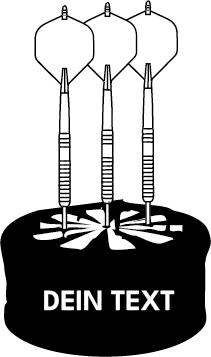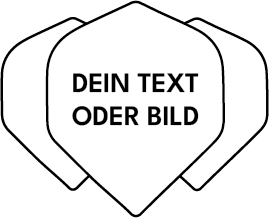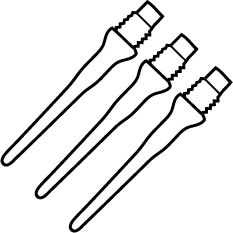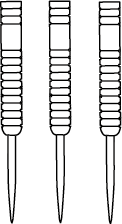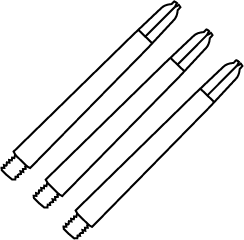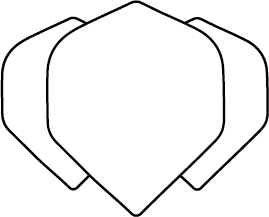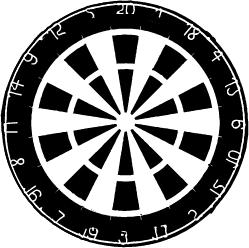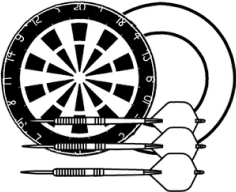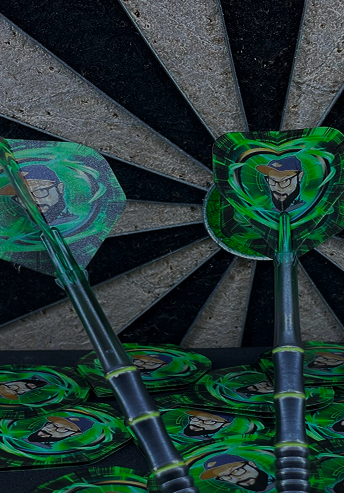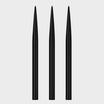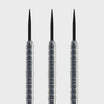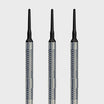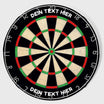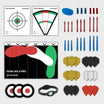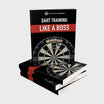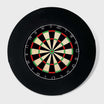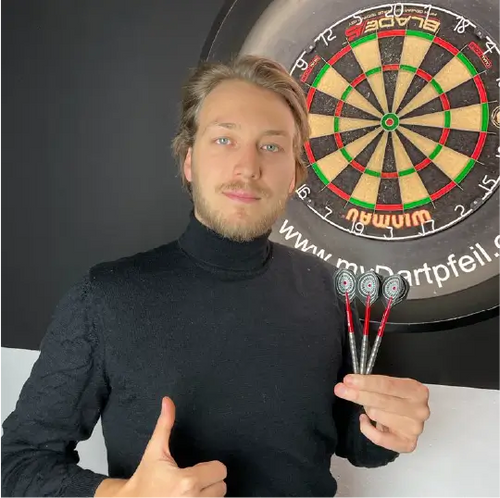
Lukas has been a darts fan since day one and a passionate darts player for over 10 years. After attending the 2016 Darts World Championship at the venerable Alexandra Palace with his future co-founder and then-flatmate Timm, it became clear to him: darts needed to become bigger and more popular in Germany, too. With myDartpfeil and the world's only dart configurator, every darts player—from beginner to professional—can create and customize their own perfect darts.
As a beginner, you face a crucial question at the very beginning of your darts career, which you want to get to the bottom of through various actions: How do I hold the dart correctly?
The only thing that's true is that there's no one-size-fits-all solution . This is also demonstrated by the variety of dart-holding styles among professionals. While Phil Taylor, for example, throws the dart with just two fingers , there are players who use almost their entire hand .
But what's the best way for a beginner to learn the game of darts? Are there golden rules , or should you just follow your instincts?
Dart finger position – how do I find out which one is right for me?
There are various techniques you can build on if you want to figure out how to hold the dart correctly. Throwing technique is, as we all know, part of the bigger picture in darts.
The key is the combination of throwing motion, finger position, and dart . Only when all three components fit together perfectly can you truly consider yourself to have reached your maximum level .
There are four basic ways to hold the arrow in your hand : with two, three, four, or even five fingers. The latter is also referred to as the "hand-held version."
In the following sections, we'll take a closer look at the advantages and disadvantages of the various finger positions . We hope to help you find the finger position that best suits your throwing style and darts.

The two-finger variant – the dart finger position for real experts
There aren't many players who actually throw with only two fingers. There are many reasons for this. But, to emphasize this once again, the number of fingers a player uses to hold the dart is absolutely not a quality indicator .
Darts is typically a two-finger sport . However, very few people play it this way. There are many reasons for this. This variant uses both the thumb and index finger.
The major disadvantage of this variant can also be considered an advantage. You're probably wondering how that's even possible. Because you're only holding the dart with two fingers, you'll probably find it difficult to control the dart at first.
The reason is that the arrow's guidance during the throwing motion can vary slightly and is never the same. At least not if you're a beginner at the board and your throwing motion isn't yet perfected.

The big advantage of this variation, however, is that with two fingers, you have as few points of contact with the arrow as possible . This also means that there are only two fingers that can change your throwing motion and posture, for example.
At least for advanced players, the risk of the arrow flying uncontrollably into the board is relatively low .
In other words: Not a good idea for beginners, but as an advanced player, it can be quite promising. Try it yourself.
Oh, by the way: The greatest darts player of all time, Phil Taylor, used exactly this two-finger variant.
The three-finger variation – holding the dart correctly to perfect the throwing technique
The three-finger variant will likely appeal to most readers. This variant is used most frequently .
This dart throwing technique is played with the thumb , index finger, and middle finger . As a beginner, it's usually the first throwing technique you'll probably instinctively use.
The big question, however, is what advantages and disadvantages it offers for beginners and advanced dart players. First, I'd like to explain to you why you instinctively grip the dart this way.
A little experiment: Take a pen and write a few words on a piece of paper. Only after you've done this instinctively do you stop writing and observe how accurately you're holding the pen. Since the dart is comparable to a pen in both shape and length, we often hold the dart in the same way we hold pens when writing. After all, humans are creatures of habit.
The advantage of this variation is that it gives you the greatest mental security at the beginning . Simply because it's a familiar finger position. The disadvantage is that it often leads you to become rigid in this finger position .
Expert tip: Since the dart and the entire throwing technique also influence how the dart lands, you should adapt your finger position to these two components - not the other way around.
The four-finger variation – a good dart finger position for beginners to get used to
The four-finger variation is the perfect dart technique to get you started . Regarding the two-finger variation, I explained that stability during the throw can suffer significantly if you don't have enough experience.
Or to put it another way: the fewer fingers you have on the dart , the higher the probability that you will release the dart uncontrollably – of course, there are exceptions to the rule.
With the four-finger variation, all fingers except the little finger are used. The ring finger , which is also used in this variation, allows for greater stability . For this reason, many beginners use this finger position to achieve initial success on the dartboard.
In principle, this finger position is very similar to the three-finger version , but for some players, the fourth finger is more of a problem than a stabilizer. Nevertheless, most players, even among professionals, play darts with three or four fingers.
The five-finger variant – also called hand variant
The rarest variation of playing darts is the so-called hand variation, in which not only the fingertips but the whole hand is used to hit the board.
Time and again, players have discovered this unorthodox throwing style for themselves. I personally remember a tournament where an opponent preferred this throwing style.
When I was throwing the darts, I thought I'd beat him by a fair margin, because it simply didn't look like it was possible to play with that kind of finger position. But I was wrong. A fraction of dart players can successfully throw at the dartboard even with that finger position.

I tried it myself once – with moderate, or rather no, success. I think you have to be born with this throwing technique and can't learn it. But try it yourself.
Learn the best techniques and proven tips that will make you a darts champion. Click here and start your journey to dartboard perfection!
- Warm up before darts Like a pro: You'll find tried-and-tested tips and exercises only here. Click in now and get warmed up!
- The art of Tournament Planning : Learn how to organize professional darts tournaments in our guide. Includes tips from the pros!
- Learn how to Cleaning darts Get tips and instructions for professional care and greater precision. Click here!
Sofern nicht anders angegeben, unterliegt das im Beitrag gezeigte Bildmaterial mit Bezug zu Dartspielern und verwandten Themen dem Copyright der Professional Darts Corporation (© PDC).

